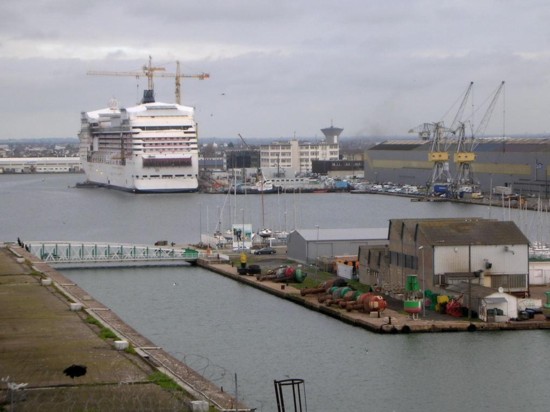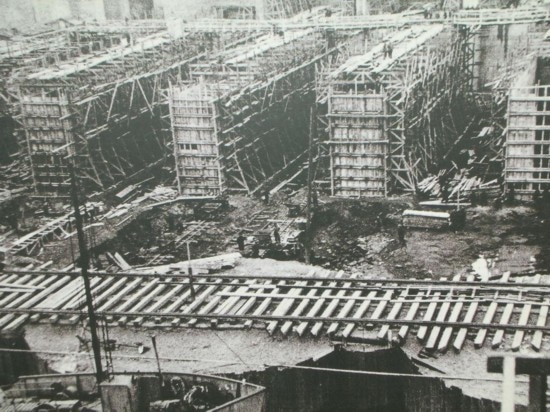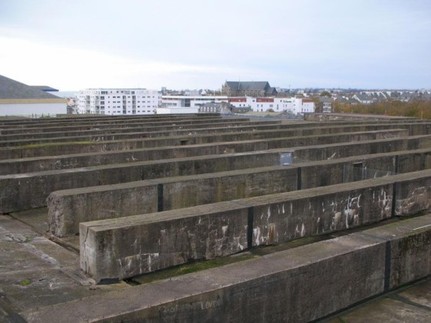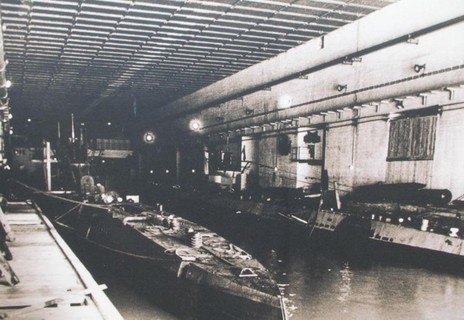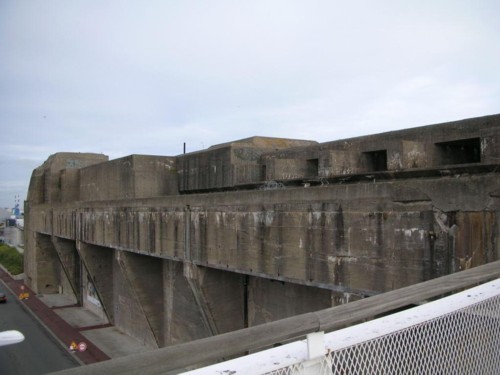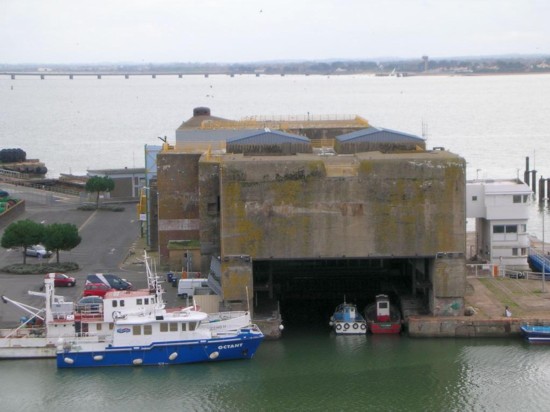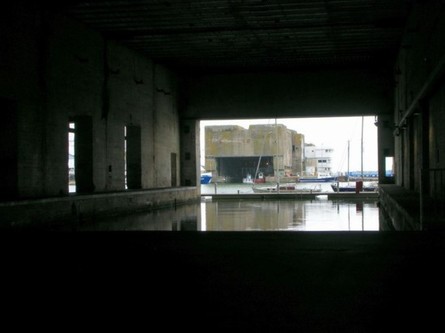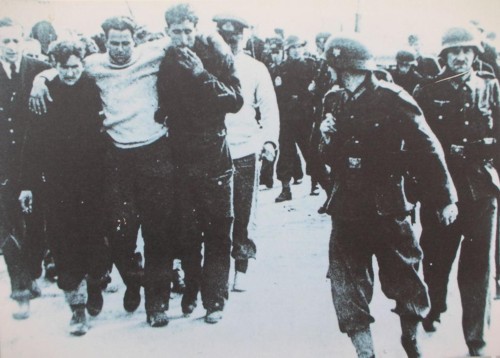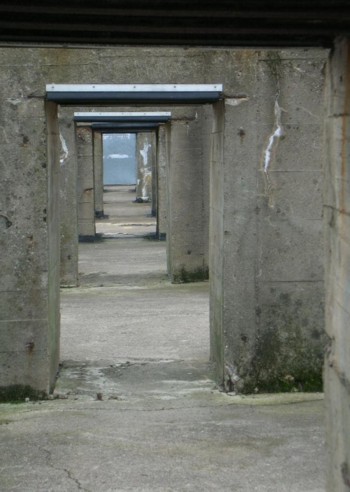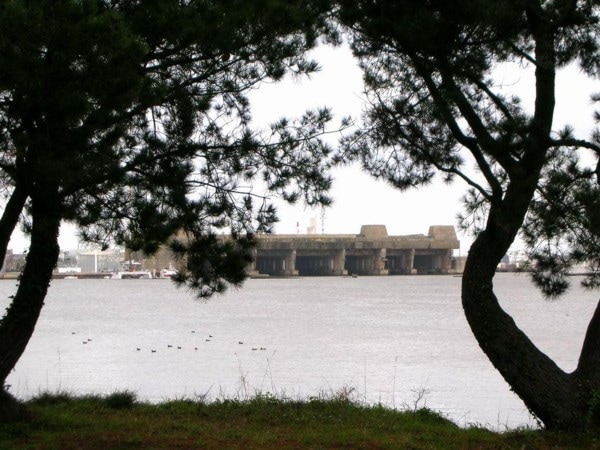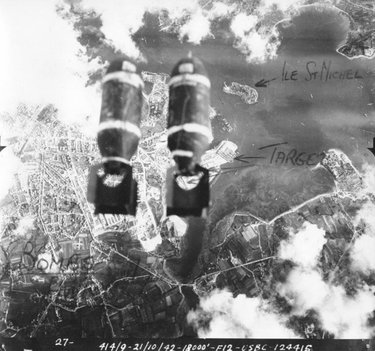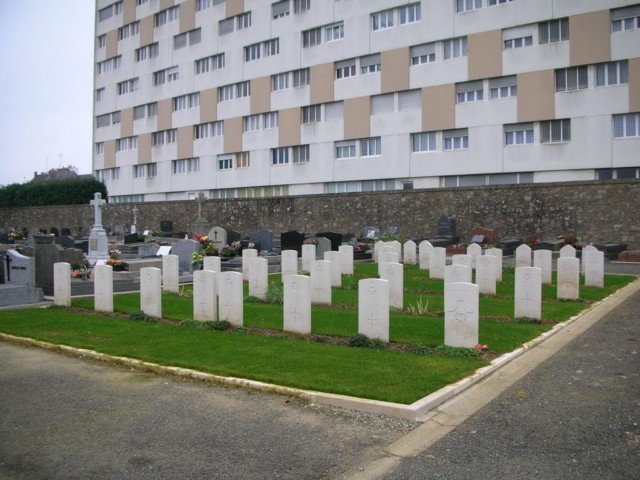U Boat Pens at Saint Nazaire and Lorient
France
Text and pictures provided by Mike Booker
St. Nazaire
St Nazaire’s Strategic Importance
Due to its excellent location on the Atlantic coast of France and existing large dry dock and port facilities at the mouth of the River Loire, St Nazaire was of strategic importance. Therefore as the German forces advanced in June 1940, they aimed to seize the town and use the excellent port for their operations in the North Atlantic.
It was from St Nazaire on the 12th June. that 40,000 British, Polish and Czech soldiers fled to safety in the UK. Five days later however the British ship “Lancastria” was sunk, as it left the Loire, resulting in a total of 3000 refugees, soldiers and civilians on board perishing.
The Germans occupied the town on the 21st June 1940.
St Nazaire – U-Boat Complex
In the period between January 1941 and December 1942 the occupying German Forces used over several thousand Todt workers to build a dock complex designed to house two of their U-Boat flotillas at St Nazaire.
This massive complex consisting of U-Boat cells, offices and workshops, was built in three stages.It covered a total area of around 390,000 square meters and required no less than 480,000 square meters of concrete to build the structure with 3.5 meter thick walls and a 5 meter deep roof, which was designed to withstand bombs of up to 3.5 tons.
Bombing Raids on St Nazaire
The Royal Air Force commenced it’s raids on St Nazaire from the begining of the war and continued to do so until 1943 when US Air Force Flying Fortresses took over the impossible task of neutralizing the port. During the war, no less than 50 raids were launched against the town and it neighbouring port. These resulted in over 479 deaths, several hundred wounded and 85% of the town being destroyed.
On the 28th March 1943 alone, an incendiary raid demolished over 50% of the town and the raid by allied 170 bombers on the 01st April 1943 led to the entire local population being evacuated.
Operation Chariot
As the war progressed, Germany seized every opportunity to strengthen its hold on mainland Europe in anticipation of an allied invasion and whilst doing so, was also able to tighten the grip in the North Atlantic by attacking allied shipping bringing valuable supplies to our shores. As the mighty German battleship “Tirpitz” –was still at large and operating out of St Nazaire, something needed to be done.
Hence, Operation Chariot – a large scale commando raid was planned. The aim was to use HMS Campbletown (which was packed with high explosive) to act as a battering ram, block and then destroy the vast lock gates. The commandos would then storm the major port installations and neutralize them.
With courage and sheer determination the objective was achieved and as well as putting the lock out of action caused the Germans a great deal of inconvenience and disruption to their war effort.
Sadly, the raid was not without cost, many commandos and naval personnel were either killed, wounded or taken prisoner. Five Victoria Crosses were awarded along with eighty other decorations for gallantry.
Due to its excellent location on the Atlantic coast of France and existing large dry dock and port facilities at the mouth of the River Loire, St Nazaire was of strategic importance. Therefore as the German forces advanced in June 1940, they aimed to seize the town and use the excellent port for their operations in the North Atlantic.
It was from St Nazaire on the 12th June. that 40,000 British, Polish and Czech soldiers fled to safety in the UK. Five days later however the British ship “Lancastria” was sunk, as it left the Loire, resulting in a total of 3000 refugees, soldiers and civilians on board perishing.
The Germans occupied the town on the 21st June 1940.
St Nazaire – U-Boat Complex
In the period between January 1941 and December 1942 the occupying German Forces used over several thousand Todt workers to build a dock complex designed to house two of their U-Boat flotillas at St Nazaire.
This massive complex consisting of U-Boat cells, offices and workshops, was built in three stages.It covered a total area of around 390,000 square meters and required no less than 480,000 square meters of concrete to build the structure with 3.5 meter thick walls and a 5 meter deep roof, which was designed to withstand bombs of up to 3.5 tons.
Bombing Raids on St Nazaire
The Royal Air Force commenced it’s raids on St Nazaire from the begining of the war and continued to do so until 1943 when US Air Force Flying Fortresses took over the impossible task of neutralizing the port. During the war, no less than 50 raids were launched against the town and it neighbouring port. These resulted in over 479 deaths, several hundred wounded and 85% of the town being destroyed.
On the 28th March 1943 alone, an incendiary raid demolished over 50% of the town and the raid by allied 170 bombers on the 01st April 1943 led to the entire local population being evacuated.
Operation Chariot
As the war progressed, Germany seized every opportunity to strengthen its hold on mainland Europe in anticipation of an allied invasion and whilst doing so, was also able to tighten the grip in the North Atlantic by attacking allied shipping bringing valuable supplies to our shores. As the mighty German battleship “Tirpitz” –was still at large and operating out of St Nazaire, something needed to be done.
Hence, Operation Chariot – a large scale commando raid was planned. The aim was to use HMS Campbletown (which was packed with high explosive) to act as a battering ram, block and then destroy the vast lock gates. The commandos would then storm the major port installations and neutralize them.
With courage and sheer determination the objective was achieved and as well as putting the lock out of action caused the Germans a great deal of inconvenience and disruption to their war effort.
Sadly, the raid was not without cost, many commandos and naval personnel were either killed, wounded or taken prisoner. Five Victoria Crosses were awarded along with eighty other decorations for gallantry.

